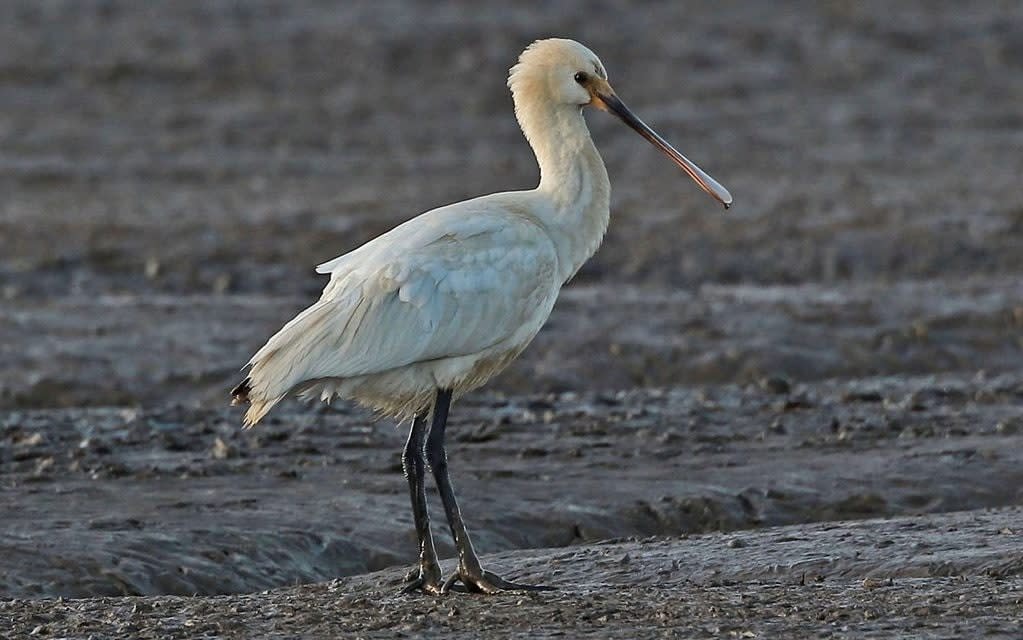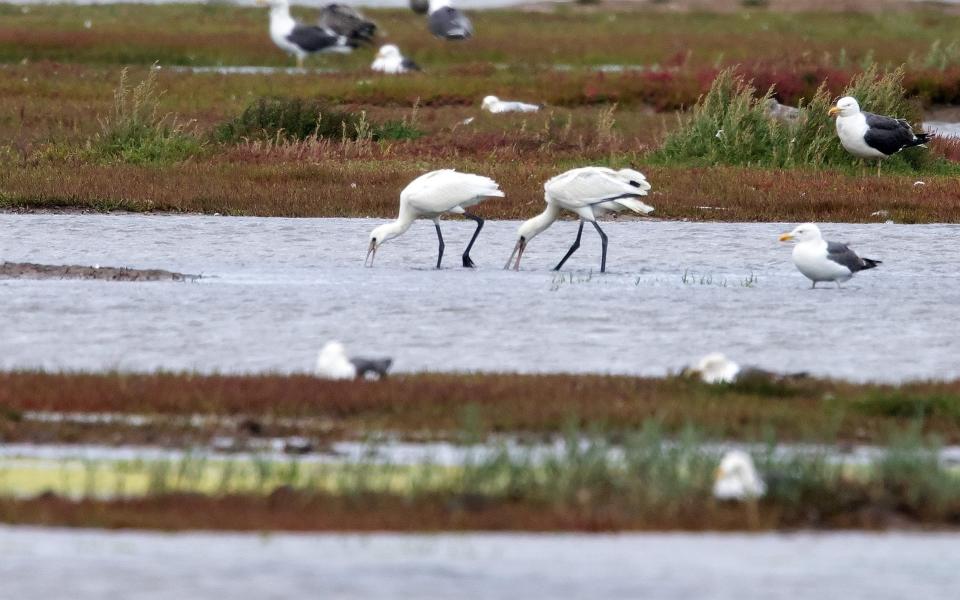Rare bird hatches on British coast for first time in 300 years after being lured to area with lifelike models

Conservationists have celebrated the arrival of rare spoonbill chicks to Suffolk for the first time in 300 years, after they used models of the birds to lure them to nest.
The RSPB used the innovative technique to attract the birds to Havergate Island after a remodelling of the nature reserve to protect against storm surges in the wake of flooding in 2013.
They put out models of spoonbills, complete with ready made “nests” to attract the birds, which were placed on special raised platforms.
The nests encouraged the birds to start displaying breeding behaviour, including passing sticks to each other, grooming partners, preening an sleeping on the platforms.
Eventually four chicks hatched from two different nests, and have now taken flight for the first time.
It is thought that the restoration of natural habitats in a bid to prevent flooding also encouraged spoonbill activity on the site.

The chicks’ arrival marks the success of 15 years of effort from the RSPB to encourage spoonbills to breed on Havergate Island.
Aaron Howe, RSPB South Suffolk Sites Manager said: “We never gave up the hope spoonbill fledglings would take that very first, special flight from Havergate island once again.”
It is the first time that spoonbill chicks have been raised in Suffolk since 1668.
The team had their first glimmer of hope in 2019, when five pairs made nests, but were disappointed when none successfully bred chicks.
They then installed a 350 metre long protective fence, partially submerged in water, around the nesting site and this year over 30 spoonbills visited the island.
Spoonbills, named after their spoon-shaped beak, are a species of conservation concern. Up to 100 spoonbills visit the UK every year, but there had been confirmed sightings since the 17th century until 1999.
The Environment Agency said in 2013 the work was being carried out as part of research to develop their understanding of how natural flood management can protect residents from the risk of increased flooding in the future.
“Projects like these show how important reviving natural habitats is for the survival of our precious wildlife – and for people,” said Mr Howe. “Wildlife-rich greenspaces are not only vital for our wellbeing but can also provide other benefits for the community such as the natural flood defences at Havergate Island.”

